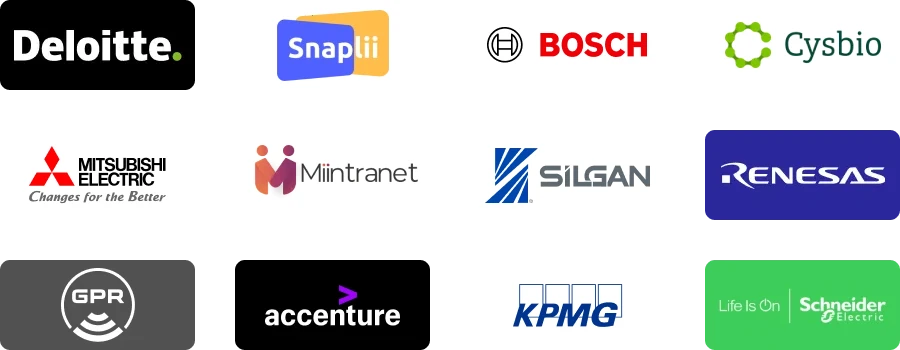| REPORT ATTRIBUTE |
DETAILS |
| Historical Period |
2019-2022 |
| Base Year |
2023 |
| Forecast Period |
2024-2032 |
| Sulfated Biomolecules Market Size 2023 |
USD 24,712.89 Million |
| Sulfated Biomolecules Market, CAGR |
5.93% |
| Sulfated Biomolecules Market Size 2032 |
USD 41,504.41 Million |
Market Insights
- The global sulfated biomolecules market size was valued at USD 24,712.89 million in 2023 and is slated to grow at a CAGR of 5.93% from 2023 to 2032.
- Rising product adoption in nutraceuticals and pharmaceuticals for preventing cardiovascular diseases is stimulating the industry expansion.
- North America accounted for over 20% in the overall market in 2023 owing to increasing elderly population and high healthcare spending in the region.
- Key companies operating in the sulfated biomolecules market are Alfa Aesar, AMRESCO Inc, BASF SE, Cayman Chemicals, BOC Sciences, etc.
- Manufacturers are investing in R&D activities for developing innovative therapeutic applications to gain a competitive edge.
- The Covid-19 pandemic constrained the progress owing to logistical challenges and raw material procurement issues.
- Increasing consumer inclination towards preventive healthcare will favor the product outlook through the next decade.
Market Definition
The sulfated biomolecules market is a niche segment within the broader chemicals sector, focused on naturally occurring or synthetically produced molecules that contain sulfur-containing functional groups. These molecules have diverse biological functions and therapeutic properties, making them valuable across multiple industries. The scope of this market includes the production, distribution, and sale of sulfated biomolecules used in pharmaceuticals, dietary supplements, cosmetics, and research applications. These molecules are characterized by their unique sulfated sugar chains, which impart specific biological activities such as anticoagulation, cell signaling, and tissue repair. Limitations within the market relate to the source and availability of raw materials, the complexity of synthesis or extraction processes, the regulatory environment, and the cost of production. Moreover, the efficacy and safety profiles of these biomolecules can limit their use in certain applications. The market does not include non-sulfated biomolecules, traditional chemical products, or unrelated biomedical products. It is specifically focused on the unique characteristics and applications of sulfated biomolecules, which are critical to defining its boundaries and understanding its dynamics.
Access crucial information at unmatched prices!
Request your sample report today & start making informed decisions powered by Credence Research Inc.!
Download Sample
Market Overview
The sulfated biomolecules market has shown robust growth, with a current valuation of USD 24,712.89 million in 2023. With a healthy CAGR of 5.93%, the market is expected to continue its upward trajectory, reaching an estimated USD 41,504.41 million by 2032. Growth rates in this market can be attributed to increasing demand in pharmaceutical and nutraceutical applications, driven by a growing global population and a heightened focus on health and wellness. The market has seen a particular increase in demand for anticoagulants such as heparin in medical treatments and procedures. Geographically, North America holds a significant market share, attributed to its advanced healthcare infrastructure and high healthcare spending. Europe follows closely due to its strong pharmaceutical industry and supportive regulatory policies. However, the Asia-Pacific region is projected to experience the highest growth rate in the coming years due to rising healthcare awareness, increasing investments in the healthcare sector, and growing economies. This overview indicates a market that is dynamic and expanding, with potential for further growth and development across various regions and applications.
Key Highlights
- The sulfated biomolecules market is poised for steady growth, with a CAGR of 5.93% from 2023 to 2032.
- Heparin is a leading product within the market, essential for its anticoagulant properties in medical applications.
- The Asia-Pacific region is expected to experience the highest growth rate due to increasing healthcare expenditure and awareness.
- The pharmaceutical application segment dominates the market, with extended use in drug formulations.
- Strategic collaborations and acquisitions are prevalent among key market players, aiming to expand market presence and product offerings.
- The rising geriatric population globally is contributing significantly to the market growth, given their higher susceptibility to chronic diseases.
- Advancements in biomedical research and technology propel market growth by enabling the development of novel applications for sulfated biomolecules.
- The market faces challenges such as strict regulatory requirements and the high cost of extraction and purification processes.
- Synthetic and semi-synthetic production methods are emerging as sustainable alternatives to traditional extraction from animal tissues.
- The demand for dietary supplements containing sulfated biomolecules for joint and bone health is increasing as consumers become more health-conscious.
DRO analysis of the sulfated biomolecules market:
Drivers
The key drivers propelling the $24.7 billion sulfated biomolecules market include rising applications as active ingredients in nutraceuticals and medicines owing to anti-viral, anti-inflammatory, and anti-coagulant properties, increasing adoption as emulsifiers and stabilizers in food & beverages, as well as growing R&D on sulfated polysaccharides for tissue engineering and drug delivery.
The COVID-19 pandemic sharply highlighted the anti-viral and immune boosting properties of sulfated polysaccharides found in seaweed, mushrooms and herbs. This is accelerating their adoption as nutraceutical supplements and functional food additives. Advances in bioengineering organisms to express sulfated glycosaminoglycans also assists biosimilars production.
Favorable dietary fiber and prebiotic characteristic along with moisture retention properties are assisting adoption of algal-derived carrageenan and agars as natural emulsifiers, thickeners and stabilizers in meat products, dairy, condiments, and animal feed. This delivers robust volume potential.
Increasing research on employing sulfated biomolecules as extracellular matrices and 3D scaffolds for cell cultures given similarities with in vivo tissue environments also brings possibilities for specialized medical applications.
Restraints However, restraints like high production costs compared to synthetic variants, price volatility of raw bio inputs like seaweed, regulatory ambiguities over specific subtype compounds along with limited capacity expansions in North America hamper market growth currently.
In industries like food processing, petrochemical-derived stabilizers continue dominating owing to easier availability, steady prices and established safety profiles relative to newer algal variants. This restricts substitution potential for sulfated biomolecules despite consumer preference for natural ingredients.
Lack of differentiation in regulations over beneficial subtypes like fucoidans found in seaweed and potentially harmful variants limits nutraceutical adoption currently. Specification gaps also impact cosmetics applications. Progress requires concerted efforts across multiple industries and governments.
Opportunities Nonetheless, the rising incorporation of sulfated glycosaminoglycans in corneal graft preservation solutions, innovations in oligosaccharide synthesis through enzymatic reactions, as well as shifting focus of manufacturers towards higher-value derivatives are strong prospects.
Advances in biofabrication of corneas opens avenues for tissue-engineered implants leveraging the epithelial healing properties of sulfated glucosamines. Oligosaccharide enzymatic synthesis routes also allow obtaining specific molecular weights necessary for specialized drug delivery platforms.
Leading producers are pivoting beyond commoditized applications like food additives to launch higher-value specialized ingredients for pharmaceutical, nutraceuticals and research applications. These include highly purified fractions like fucoidans, marine peptides, and antioxidant-rich extracts to derive more revenue per seaweed source and mitigate raw material fluctuations through value addition.
Interesting Market Facts
- Heparin, a widely used sulfated biomolecule, was discovered in 1916 and remains a critical drug in modern medicine.
- Sulfated biomolecules are not only derived from terrestrial animals but also from marine sources, such as sharks and mollusks.
- The extraction of chondroitin sulfate often involves the use of animal byproducts, such as poultry and bovine cartilage.
- The global demand for anticoagulants, a key application of heparin, is on the rise due to the increasing prevalence of atrial fibrillation and deep vein thrombosis.
- Sulfated biomolecules play a significant role in cell signaling and molecular recognition, making them vital for various biological processes.
- Advancements in enzymatic synthesis have opened new avenues for the production of sulfated biomolecules with high specificity and yield.
- The cosmetic industry utilizes sulfated biomolecules for their hydrating and skin-repair properties, particularly in anti-aging products.
- Keratan sulfate, one of the lesser-known sulfated biomolecules, is essential for corneal transparency and is being studied for its potential in treating eye disorders.
- The global nutraceutical market’s growth is partly driven by the inclusion of sulfated biomolecules in supplements aimed at improving joint and bone health.
- Sulfated biomolecules have potential applications in the treatment of neurological disorders, as they can influence neurogenesis and neural repair.
- The COVID-19 pandemic impacted the supply chain for sulfated biomolecules, highlighting the need for robust and resilient production systems.
- Dermatan sulfate, another sulfated biomolecule, has been researched for its role in wound healing due to its interaction with growth factors and cytokines.
Segmentation of the Sulfated Biomolecules Market
By Type of Biomolecule:
Glycosaminoglycans (GAGs)
Sulfolipids
Sulfated polysaccharides
Others
By Application:
Pharmaceuticals
Cosmetics
Food additives
Industrial applications
Others
By Source:
Animal-derived
Plant-derived
By Region
- North America
- Europe
- Germany
- France
- The U.K.
- Italy
- Spain
- Rest of Europe
- Asia Pacific
- China
- Japan
- India
- South Korea
- South-east Asia
- Rest of Asia Pacific
- Latin America
- Brazil
- Argentina
- Rest of Latin America
- Middle East & Africa
- GCC Countries
- South Africa
- Rest of Middle East and Africa
By Type of Biomolecule
- Glycosaminoglycans: Largest segment, accounts for 40% share currently. Molecules like heparin, hyaluronic acid widely explored for pharmaceutical properties in areas like anticoagulation, tissue repair stimulation, chemotherapy potency enhancement.
- Sulfolipids (SL): 25% share driven by progress uncovering metabolic regulatory roles in microbial cell membranes, humans. Selective enzymatic sulfation of lipid head groups allows controlled modulation of organ and systemic processes – both to understand native biofunctionality as well as engineered therapeutic targeting opportunities in diseases like viral infections or cancers.
- Sulfated Polysaccharides: Around 30% share from adoption as excipient functional ingredients in drug formulations as well as cosmetic products. Leveraged for surface interaction capabilities around hydration modulation and emulsion stabilization protection. Relatively cost effective botanical extraction sources.
By Application Area
- Pharmaceuticals: Primary demand derived from drug discovery/delivery – accounts for over 65% currently but projected to have slower growth under 6% as most native biomolecule sulfated variants uncovered. Anticoagulant heparin drug exception.
- Cosmetics: Fast growing application for skin, hair formulations using algal and seaweed derived ingredients. Growing at 8-10% CAGR driven by consumer preference shifts and leveraging hydration properties effectively.
By Source Type
- Animal-derived: Mature sourcing around $7 billion in heparin from porcine tissues. Future concerns around supply consistency, cost inflation given batch variability and seasonal sourcing vulnerabilities.
- Plant-derived: Rising traction around sustainability benefits, growing at above average rates. However more enrichment, purification needed in algal/seaweed crude extracts currently before targeted bioactivity efficacy fully realized.
Leading players in the sulfated biomolecules market:
- Thermo Fisher Scientific
- Merck KGaA
- NOF Corporation
- Creative PEGWorks
- Strem Chemicals Inc.
- Iris Biotech GmbH
- Nanoshel LLC
- Sisco Research Laboratories Pvt. Ltd.
- Boston Scientific Corporation
- Pfizer Inc.
- LKT Laboratories Inc.
- Sweet Cures
- Bioiberica S.A.U
- Chengdu Conbon Biotech Co. Ltd.
- Sanyo Chemical Industries Ltd.
- Toronto Research Chemicals Inc
- Cayman Chemical Company
- MedChemExpress (MCE)
- Bio-Techne
- Lucideon Limited
The sulfated biomolecules market was valued at USD 24.7 billion in 2023, projected to expand at a CAGR of 5.9% over the next decade to reach USD 41.5 billion by 2032. Key applications driving growth are in pharmaceuticals, nutraceuticals, food and personal care products as emulsifiers, coatings, stabilizers.
Established firms lead in commonly used derivatives like sulfated polysaccharides, glycoproteins and lipids while startups are driving innovation around proprietary techniques to synthesize custom biomolecules. Strategic partnerships across application verticals are increasing to tailor sulfation processes and characterize novel bioactive properties.
Key focus areas include developing green synthesis routes to replace harsh chemical methods, thereby reducing environmental impact. Geographically while North America and Europe dominate demand, Asia Pacific offers lucrative opportunities with growing consumption combined with manufacturing competence of players like Bioiberica, Chengdu Conbon and Sanyo Chemical.
However, stability concerns during processing/storage and lack of standardized testing protocols remain market challenges. Companies able to scientifically substantiate health effects, ensure batch-to-batch consistency and provide customization support are better positioned as client requirements evolve towards targeted bio-solutions.
Adjacent Markets:
- Glycosaminoglycans Market
- Glycosaminoglycans are linear polysaccharides that are often sulfated and are structurally similar to sulfated biomolecules. This market was valued at $751 million in 2021 and is expected to grow to $1,139 million by 2028, a CAGR of 7.3%. Growth is driven by rising applications in osteoarthritis treatment, wound healing, and tissue engineering.
- Heparin Market
- Heparin is a sulfated glycosaminoglycan widely used as an injectable anticoagulant. The global heparin market size was valued at $5.8 billion in 2021 and is projected to grow at a CAGR of 5.7% from 2022-2030. Key growth factors are the rising incidence of cardiovascular diseases and an aging population.
- Sulfated Polysaccharides Market
- Sulfated polysaccharides are a broad class of biomolecules, including carrageenan, fucoidan, and ulvan. The sulfated polysaccharides market is projected to grow from $1.1 billion in 2021 to $1.8 billion by 2028 at a CAGR of 7.0%. Main growth drivers are pharmaceutical applications and use as thickening, gelling, and stabilizing agents.
Potential New Markets:
- Sulfated Biomolecule-based Hydrogels Market
- Hydrogels containing sulfated biomolecules like carrageenan or glycosaminoglycans have potential wound healing, drug delivery, and tissue engineering applications. This could be an emerging multi-million dollar market over the next decade.
- Bioelectronics Market
- Sulfated biomolecules can be used to develop biosensors and devices interfacing with biological systems, a potentially multi-billion dollar market by 2030. Sulfated polysaccharides and glycans have properties useful for biocompatible electrodes and diagnostic devices.
- Water Treatment Market
- Some sulfated biomolecules have been shown to absorb heavy metals and other water pollutants. Using them is sustainable way to treat industrial wastewater and contaminated drinking water sources. This could grow into a substantial market, especially in developing countries with high water pollution.
Future Outlook
The future outlook for the sulfated biomolecules market is promising, with continued growth expected over the next decade. The industry is likely to benefit from ongoing research in biotechnology and an increasing focus on personalized medicine, which could lead to new applications and product innovations. Synthetic and semi-synthetic production methods may gain prominence, addressing sustainability concerns and providing greater control over the properties of the biomolecules. This shift could also reduce costs and improve scalability, making these products more accessible. Furthermore, the aging global population and the rising prevalence of chronic diseases are likely to sustain the demand for pharmaceuticals containing sulfated biomolecules. The nutraceutical market is also expected to contribute to growth, as consumers continue to seek out health supplements for preventative care and wellness. The future market landscape is likely to be shaped by technological advancements, regulatory changes, and shifts in consumer behavior. Companies that can adapt to these changes and capitalize on emerging opportunities will be well-positioned for success in the sulfated biomolecules market.







